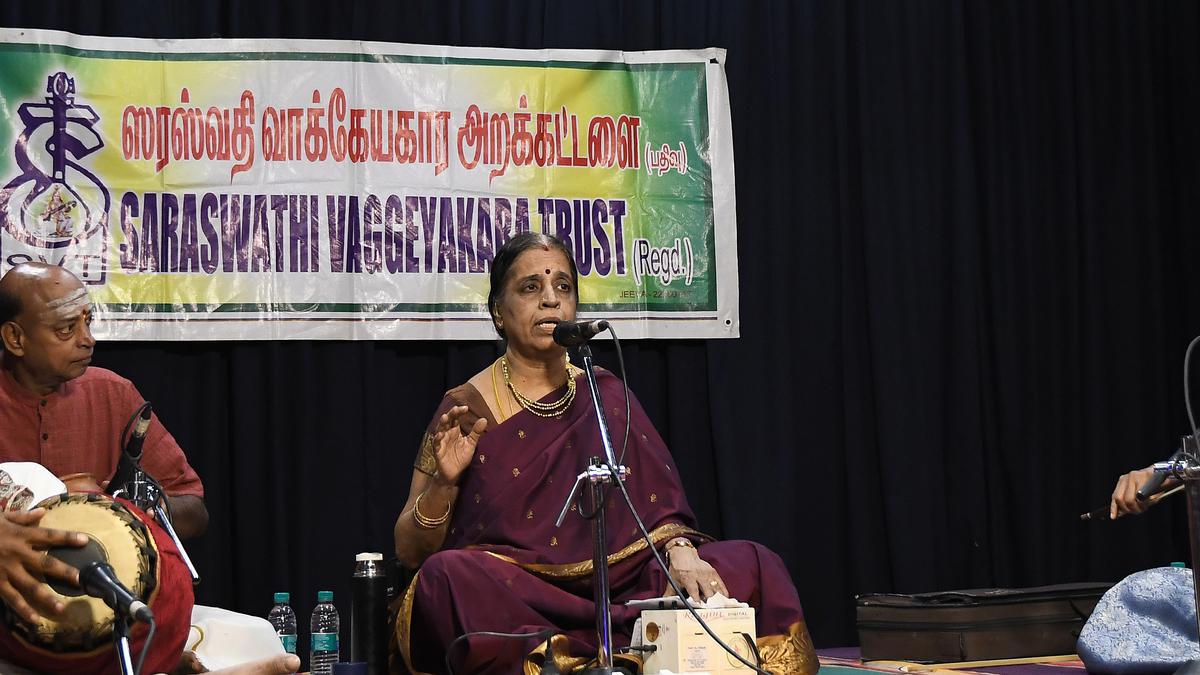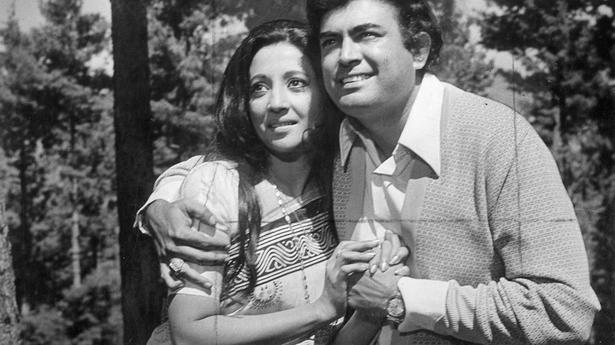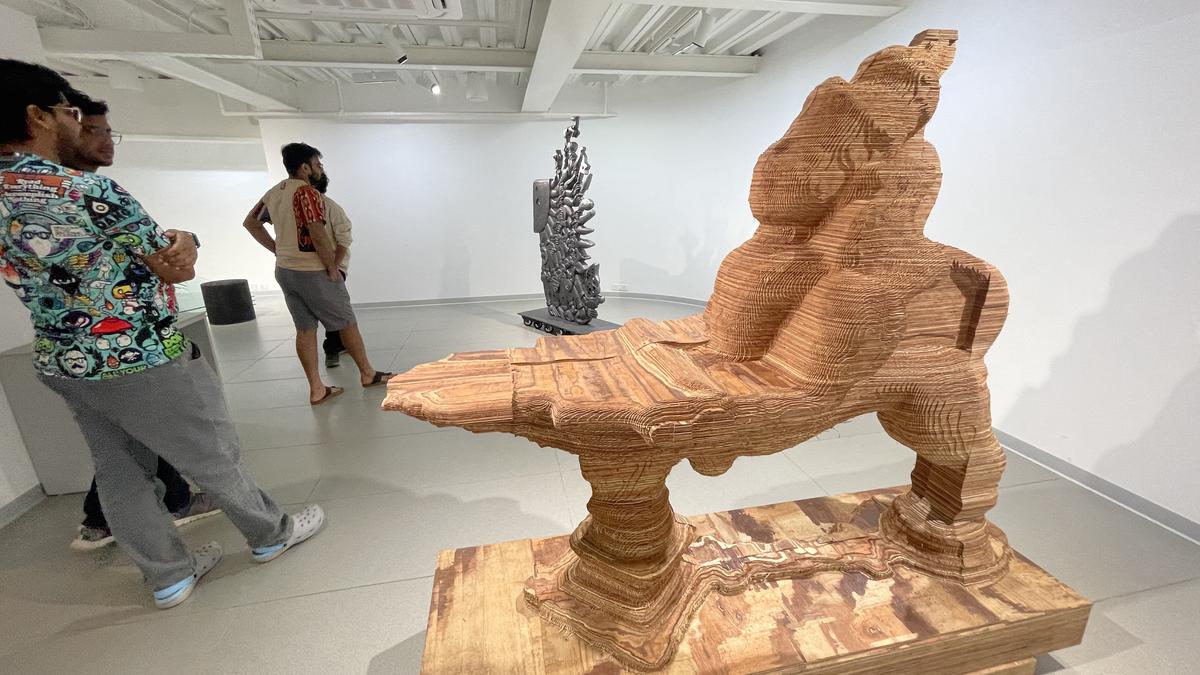Prema Rangarajan accompanied by Usha Rajagopalan on the violin, Mannarkoil J. Balaji on the mridangam, Madipakkam A. Murali on the ghatam at Sri Muthuswami Dikshitar Jayanthi in Narada Gana Sabha on Sunday.
| Photo Credit: VELANKANNI RAJ B
Veteran vocalist Prema Rangarajan presented an erudite vocal recital as part of the Muthuswami Dikshitar Jayanthi celebrations, held under the aegis of Saraswathi Vaggeyakkara Trust at Narada Gana Sabha Mini Hall. A well-structured concert, it was a fitting tribute to the great composer.
Exquisite compositions by the composer were offered with raga essays, and crisp niravals at appropriate places suffixed with well-structured swarakalpanas. She stuck to the traditional pattern throughout the concert.
‘Gana raajena rakshitoham’ in Arabhi followed by the popular kriti ‘Swaminatha paripalaya asumam’ in Nattai with a niraval and swara adjunct at ‘Vaamadeva parvati’ set the tone for the two-hour concert. The composition carried a captivating chittaswaram. ‘Pannagasayana padmanabha’ in Madhyamavati came up next. There was a brief exposition at ‘Payasanna priyakara shrikara’.
Crisp raga essay
Prema’s raga essay for Abhogi appended with the popular ‘Sri Lakshmi varaaham’ stood out. ‘Nagagandhari raganute’ was the next Dikshitar kriti that was presented. This kriti has the name of the raga as the starting point.
A fairly detailed essay of Dharmavati preceded the composition ‘Parandhamavati jayati’. Through her elaboration, Prema Rangarajan effectively brought to the fore the beauty of the raga. It was further augmented by violinist Usha Rajagopalan in her response. The swara exchanges between them at ‘Paranjyoti vikasini’ were framed well.
The main raga of the evening was Dhanyasi. Prema Rangarajan deliberated on the raga essay with lengthy phrases, pregnant pauses and interesting embellishments. Dikshitar’s ‘Paradevata braht kuchamba’ was rendered in all its splendour.
The charanam line ‘Kalamalini katyayani kanchalochani’ was chosen for detailing, followed by a surfeit of swarakalpanas. The well-nuanced tani avartanam between Mannarkoil Balaji (mridangam) and Madipakkam Murali (ghatam) heightened the appeal.
Prema Rangarajan concluded with Dikshitar’s Dasavatara ragamalika, which opened as ‘Madhavo mampahi’. It was set in ten ragas such as Nattai, Gowla, Sri, Arabhi, Varali, Kedaram, Vasantha, Surutti, Sowrashtram and Madhyamavati, and each raga lyric had a chittaswara section.







